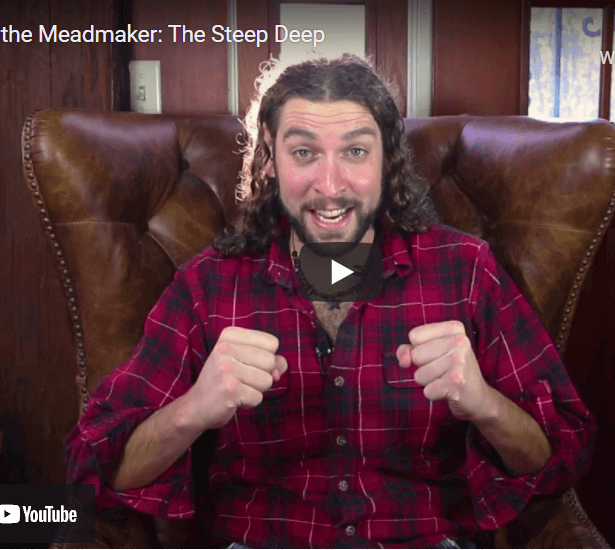Aging: The Secret of the Ages
Choosing a Yeast Strain
Fire-Drake Recipe
Fire on Snow
Mead Varieties Poster
There's an argument going around that mead is the most sustainable beverage to brew, environmentally speaking. This may or may not be true. It's a plausible argument, but I do know what helps the environment. Using fewer resources. So, I've stopped heating my house. This led to two funny things. One, you can see my breath in this episode and two, Nora is so into her new Christmas jackets right now.
Welcome to Ask the Meadmaker, where I, Ricky the Meadmaker, answer your questions about mead making, mead drinking, mead brewing, and really any question you're willing to send to me.
Joseph, who was new to home brewing, asked two really good questions. One, in the secondary, do you still need a bubble lock? The answer is no, technically you don't, but I always recommend it because I've had enough fermentations kick back up. I don't want bottle bombs, especially a five gallon bottle bomb, which leads to the second question. He is making smaller batches. One gallon rather than five and he wants to know if they'll age quicker. The answer is aging is quite a mystery. But if they're on oak they do. So, if you're aging in teeny barrels, the answer is yes.
Man Made Mead wants to know if I've ever made a capsicumel before and the answer is yes. Fire Drake, which is a havoc seasonal, is a capsicumel, as is Fire on Snow, which comes out this week!
Bashti wants to know if there's any hazard to mixing commercial yeasts, or is it just like a multi-strain wild fermentation? And the answer is there's no hazard to it. Actually, commercial brewers will often do it, but rather than mixing them all at once, we usually use them sequentially, to get different characteristics out of our fermentation like something that has a lot of ester production early on, and then a yeast that will clean it up in the secondary.
Bretton wants to know if we truly spontaneously ferment Nordic farmhouse, or if we pitch something like a Kveik, or a Saison strain. And the answer is, once every two to three years, we pitch Saison yeast into Nordic farmhouse, then we capture that yeast, collect it, and re-pitch it, batch to batch. After two to three years, it's mostly the wild yeast that comes from our unpasteurized honey, and the unpasteurized cranberry. But as it changes with time, it hits its stride and then it starts to turn a little bit. When we don't like it anymore, we start the whole process over again.
Seam to Sapling wants to know if I've ever had a batch go so bad that I should have thrown it away. The answer is, I have never had a mead that I thought was so bad that someone else didn't love it.
Our last question this week is from last episode, and it's from Jeff about heating up honey in a sous vide, and seeing if it makes a bochet. And he did it. He did it at 180˚F, and the honey darkened, and it made an amazing mead. He doesn't know if it's just those dark honey flavors or if it's truly a bochet, or if he just made a good batch for once. But the answer is the honey did get darker at that temperature, so there you go. You can sous vide honey.
That's our last question this week. Keep sending them and I'll get to them as soon as possible. Cheers.




